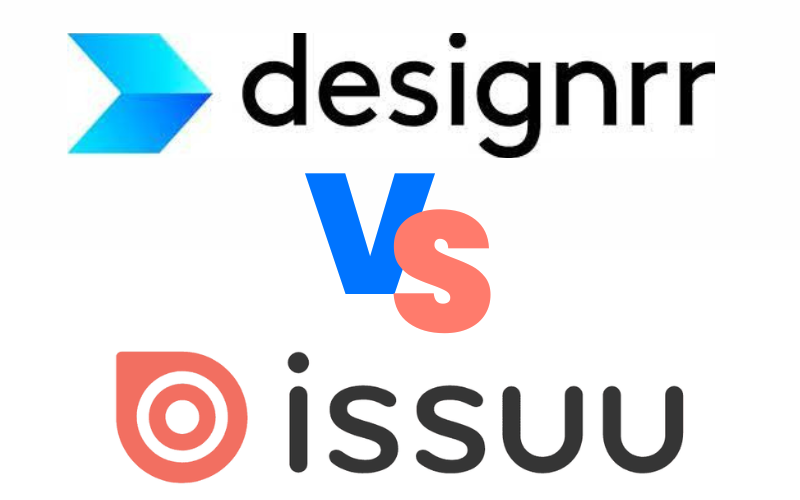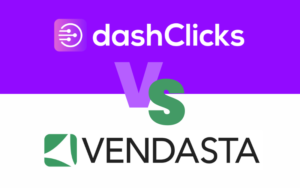Table of Contents
Introduction: Designrr vs Issuu – Navigating the Best Digital Publishing Platforms
In the quest to find the ideal digital publishing platform, two names often emerge as frontrunners: Designrr and Issuu. Both platforms have carved out significant niches in the world of online content creation and distribution. However, choosing between Designrr and Issuu can be challenging, as each offers unique features and functionalities tailored to different digital publishing needs.
This blog post provides a detailed comparison of Designrr and Issuu, examining key aspects such as ease of use, template design, content import capabilities, and much more. Whether you’re a content marketer, a small business owner, or a publishing house, understanding the strengths and limitations of each platform is crucial for making an informed decision. Let’s dive into the world of digital publishing and discover which platform – Designrr or Issuu – best aligns with your content creation and distribution goals.
Overview and Core Features: Designrr vs Issuu Comparison
When evaluating digital publishing platforms, it’s essential to understand the core features that set each apart. In this Designrr vs Issuu comparison, we’ll delve into the fundamental aspects of these two popular platforms, helping you make an informed decision based on your specific needs.
Designrr: A Brief Overview Designrr is a versatile content creation and lead generation tool primarily used for converting blog posts, podcasts, videos, and PDFs into eBooks, lead magnets, and other visually appealing formats. It’s favored by marketers, bloggers, and entrepreneurs who want to repurpose content and enhance their lead generation strategy.
Key Features of Designrr:
- Content Repurposing: Allows easy conversion of web content into eBooks.
- Ebook Creation: Offers a variety of templates and customization tools for creating professional-looking eBooks.
- Audio and Video Transcription: Transforms video and audio content into text format.
- Lead Magnet Creation: Facilitates the design of lead magnets to boost marketing efforts.
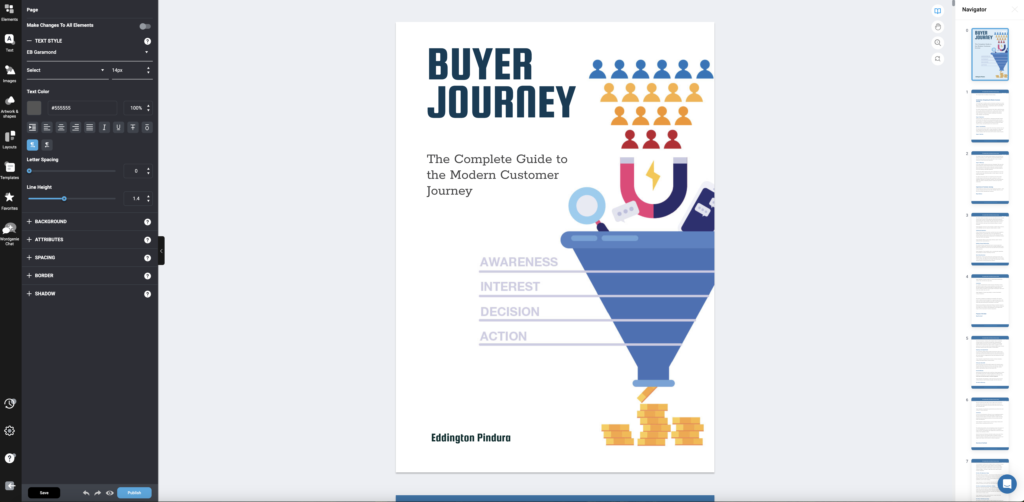
Issuu: A Brief Overview Issuu stands out as a digital publishing platform ideal for creating and distributing magazines, catalogs, and brochures. It caters to publishers, marketers, and creatives looking for a tool to design and share digital publications with a broader audience.
Key Features of Issuu:
- Multi-Format Publishing: Supports a wide range of digital publication formats.
- Embeddable Content: Offers tools to embed publications on websites and social media.
- Statistics and Insights: Provides analytics on publication performance.
- Interactive Content Creation: Enables adding interactive elements like links and videos to digital publications.
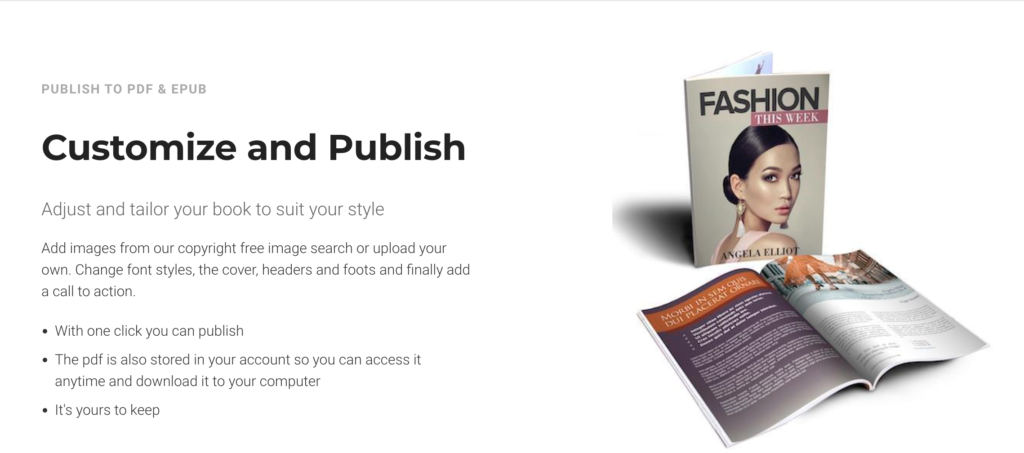
In summary, while both Designrr and Issuu offer robust features for digital publishing, their core functionalities cater to slightly different needs. Designrr excels in content repurposing and eBook creation, making it a go-to for content marketers and bloggers. In contrast, Issuu is more focused on interactive and diverse format publishing, appealing to those in the magazine and catalog industry. Understanding these nuances is key in choosing the right platform for your digital publishing requirements.
Ease of Use: Designrr vs Issuu Comparison
When selecting a digital publishing platform, ease of use is a critical factor, especially for those who might not have extensive design experience. In this Designrr vs Issuu comparison, let’s look at how user-friendly each platform is, from their interface to the overall usability.
Designrr: User-Friendly for Beginners and Professionals Designrr is known for its straightforward and intuitive interface. Users, regardless of their technical skills, can easily navigate through its features. The platform offers a drag-and-drop editor, making the process of eBook creation and content repurposing quite effortless.
Key Aspects of Designrr’s Ease of Use:
- Simple Interface: Clear layout with easily accessible tools.
- Template Variety: Wide range of customizable templates that simplify the design process.
- Guided Steps: Offers step-by-step guides for various tasks, making it approachable for beginners.
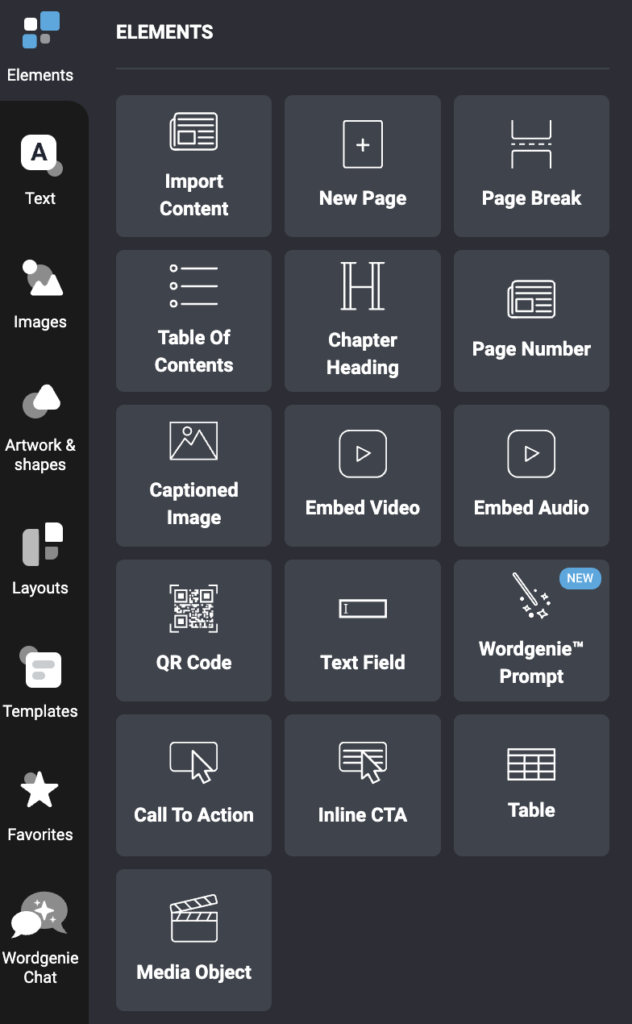
Issuu: Streamlined Workflow for Digital Publications Issuu also boasts a user-friendly interface, though it caters to a slightly different audience. It streamlines the process of creating and publishing digital magazines, catalogs, and brochures. The platform provides a smooth workflow from upload to publication, although it might take some time for new users to familiarize themselves with all of its functionalities.
Key Aspects of Issuu’s Ease of Use:
- Straightforward Upload and Publish Process: Easy to upload documents and convert them into digital publications.
- Interactive Tools: Offers a range of tools to enhance digital publications, which are simple to apply.
- Integration Capabilities: Easily integrates with other software, enhancing the overall user experience.

In conclusion, both Designrr and Issuu offer user-friendly experiences, but they differ in their approach. Designrr is highly accessible for users of all skill levels, making it ideal for quick and easy eBook creation. On the other hand, Issuu provides a professional platform for creating digital magazines and brochures, with a slightly steeper learning curve that can be quickly overcome. Your choice between Designrr and Issuu will depend on your specific needs and familiarity with digital publishing tools
Template Design and Customization: Designrr vs Issuu Comparison
In the world of digital publishing, the ability to customize and utilize templates effectively is crucial. In this Designrr vs Issuu comparison, we’ll explore how each platform stands out in terms of template design and customization options, ensuring that your publications not only look professional but also resonate with your brand and audience.
Designrr: A Wealth of Customizable Templates Designrr excels in offering a diverse range of templates, particularly geared towards eBook creation and lead magnets. These templates are not only aesthetically pleasing but also highly customizable to suit different branding needs.
Key Highlights of Designrr’s Templates:
- Variety of Choices: A vast collection of templates suitable for various niches and purposes.
- Customization Freedom: Users can easily modify layouts, colors, fonts, and more, allowing for a high degree of personalization.
- Ease of Use: The templates are designed to be user-friendly, even for those with minimal design experience.

Issuu: Professional and Interactive Templates Issuu provides templates that are more focused on digital magazines, catalogs, and brochures. While there is a level of customization available, the emphasis is on maintaining a professional and clean aesthetic, suitable for publication-style content.
Key Highlights of Issuu’s Templates:
- Professional Layouts: Templates designed for a polished and professional look, ideal for publications.
- Interactivity Features: Options to add interactive elements like links and videos within the templates.
- Brand Integration: Ability to integrate brand elements, though with a slightly more structured approach than Designrr.
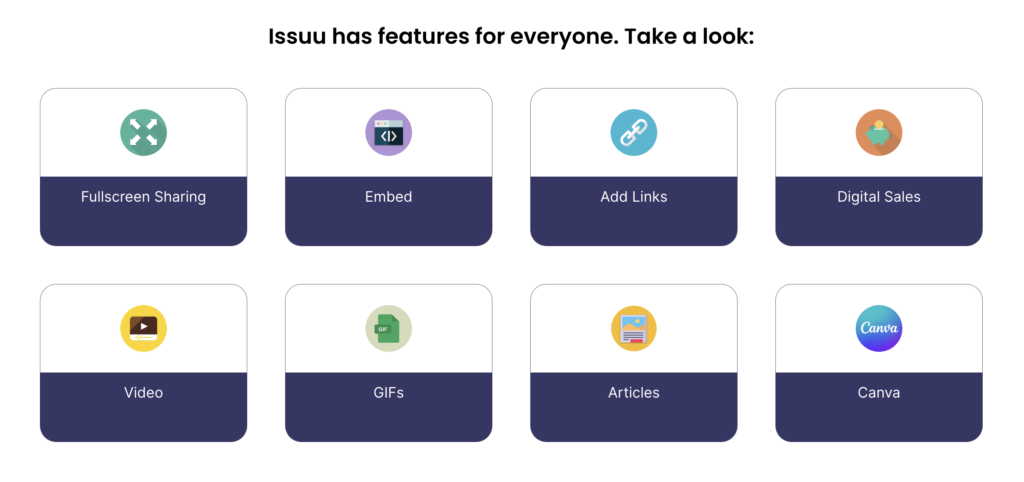
In summary, while both Designrr and Issuu offer strong template design and customization options, they cater to different needs. Designrr provides a wide range of easily customizable templates, making it ideal for those looking to create unique and personalized eBooks or lead magnets. Issuu, on the other hand, offers templates that lend themselves to a more polished and professional digital publication look, with added interactivity that enhances the reader’s experience.
Content Import and Conversion Capabilities: Designrr vs Issuu Comparison
In digital publishing, the efficiency with which a platform can import and convert content is a key determinant of its effectiveness. This segment of our Designrr vs Issuu comparison focuses on how each platform manages these critical tasks.
Designrr: Streamlined Content Import and Conversion Designrr is notable for its content import capabilities, particularly its ability to effortlessly convert blog posts, podcasts, and videos into eBooks and PDFs. This feature is a significant time-saver for content creators looking to repurpose existing material.
Key Features of Designrr’s Import and Conversion:
- Versatile Import Options: Easily imports content from websites, Microsoft Word documents, and various other formats.
- Efficient Conversion Process: Quickly converts imported content into eBooks, PDFs, and other formats with minimal formatting issues.
- Audio and Video Transcription: Transcribes audio and video content into text, simplifying the creation of written materials.
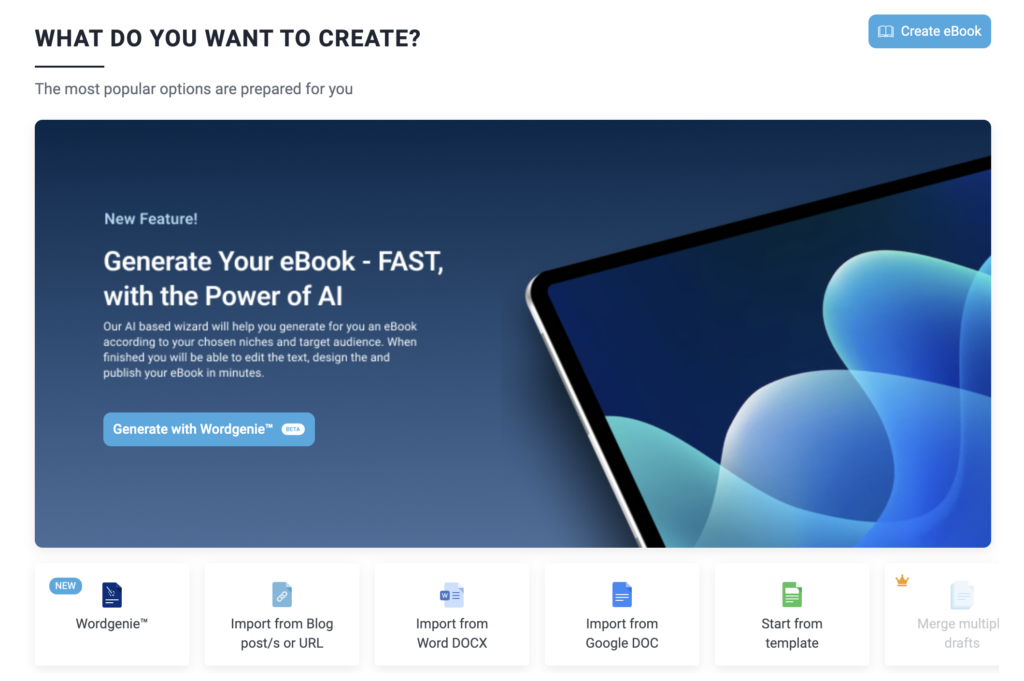
Issuu: Robust Conversion for Publication-Ready Content Issuu shines in converting PDFs into digital flipbooks, magazines, and catalogs. The platform maintains the layout and design of the original PDF, ensuring that the digital version closely mirrors the physical publication.
Key Features of Issuu’s Import and Conversion:
- PDF to Digital Flipbook Conversion: Converts PDF files into interactive digital flipbooks, ideal for magazines and catalogs.
- Maintains Original Design: Preserves the layout, fonts, and images of the original PDF, ensuring high-quality digital reproduction.
- Interactive Enhancements: Allows adding hyperlinks and multimedia elements to the digital publications, enhancing reader engagement.
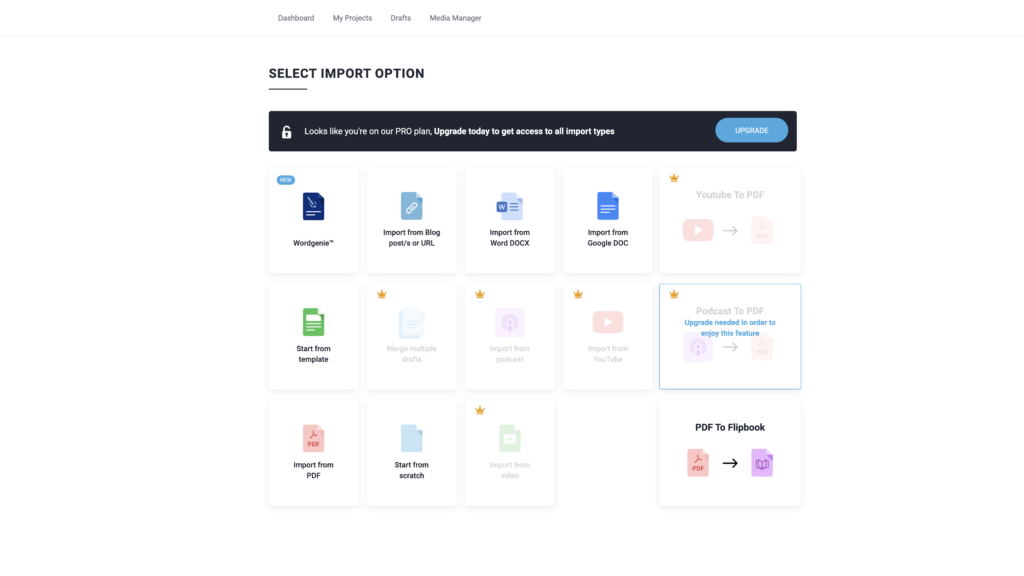
In essence, Designrr and Issuu cater to different aspects of content import and conversion. Designrr is focused on ease and versatility, allowing for quick repurposing of various content forms into eBooks and lead magnets. Issuu, conversely, excels in transforming PDFs into high-quality digital publications, making it ideal for creators of magazines and catalogs. Understanding these distinctions will help you choose the platform that best aligns with your content strategy.
Integration with Other Tools: Designrr vs Issuu Comparison
The ability to integrate seamlessly with other tools and platforms is a significant aspect of choosing the right digital publishing software. In this Designrr vs Issuu comparison, we will evaluate how each platform performs in terms of integration capabilities, which is crucial for streamlining workflow and enhancing productivity.
Designrr: Effective Integration for Content Repurposing Designrr offers integrations that are particularly beneficial for content creators looking to repurpose existing material. While it may not have a vast array of integrations, its existing ones are targeted and effective.
Key Features of Designrr’s Integration Capabilities:
- Integration with Content Platforms: Designrr allows importing content directly from numerous sources, including websites, blogs, and Microsoft Word.
- Social Media Connectivity: Facilitates the sharing of finished products, like eBooks and PDFs, directly to social media platforms.
- Email Marketing Services Compatibility: Works well with popular email marketing tools, enhancing lead magnet creation and distribution processes.
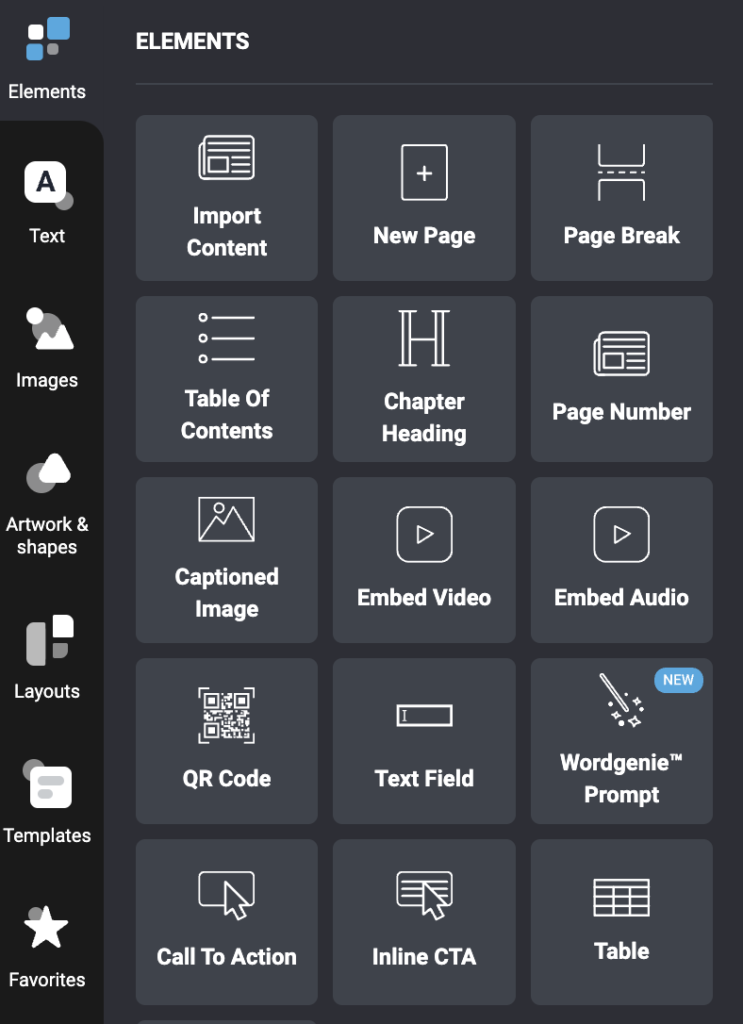
Issuu: Broad Integration for Diverse Publishing Needs Issuu stands out with its broader range of integrations, especially those beneficial for publishers and marketers. These integrations facilitate a more dynamic publishing process and expand the distribution reach of digital publications.
Key Features of Issuu’s Integration Capabilities:
- Comprehensive CMS Integration: Easily integrates with various Content Management Systems, allowing for smooth content transfer and publication.
- Social Media and Website Embedding: Offers tools to embed publications on social media platforms and websites, increasing accessibility and reach.
- E-commerce and Marketing Tool Integration: Issuu’s integration with e-commerce platforms and marketing tools makes it a robust choice for businesses looking to leverage their digital content for sales and promotion.
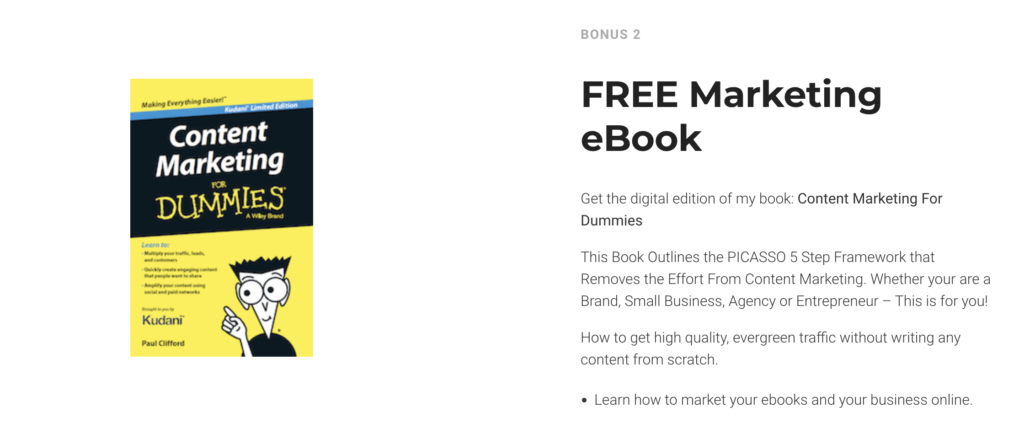
In conclusion, both Designrr and Issuu provide valuable integration capabilities, but they cater to different needs. Designrr focuses on integrations that assist in content repurposing and direct sharing, making it ideal for content marketers and bloggers. Issuu, on the other hand, offers a wider range of integrations suited for publishers and businesses looking to enhance their digital publication’s reach and functionality. Your choice will depend on the specific integrations that align with your workflow and goals.
Publishing Options: Designrr vs Issuu Comparison
The range and flexibility of publishing options are crucial for any digital publishing platform. This section of our Designrr vs Issuu comparison examines the publishing capabilities of both platforms, helping you understand which might better suit your distribution needs.
Designrr: Focused on eBook and PDF Publishing Designrr is primarily geared towards the creation and publishing of eBooks and PDFs. Its strength lies in its ability to turn various content forms into professionally designed eBooks and lead magnets, which can be distributed across different channels.
Key Features of Designrr’s Publishing Options:
- eBook and PDF Creation: Specializes in converting blog posts, videos, and podcasts into eBooks and PDFs.
- Multiple Export Options: Offers the ability to export content in various formats like PDF, Kindle, and ePUB, accommodating different reader preferences.
- Direct Sharing Capabilities: Enables direct sharing of the created content on social media and through email marketing channels.

Issuu: Versatile Digital Publication Distribution Issuu shines with its broad range of digital publication formats, making it a preferred choice for creators of magazines, catalogs, and brochures. Its platform allows for the distribution of content in visually engaging, interactive formats.
Key Features of Issuu’s Publishing Options:
- Digital Flipbook Creation: Transforms PDFs into interactive flipbooks, suitable for online magazines and catalogs.
- Embedding on Websites and Social Media: Provides the option to embed publications on websites and social platforms, enhancing reach and engagement.
- Statistics and Insights: Offers analytics on publication performance, helping creators understand reader engagement and adjust strategies accordingly.
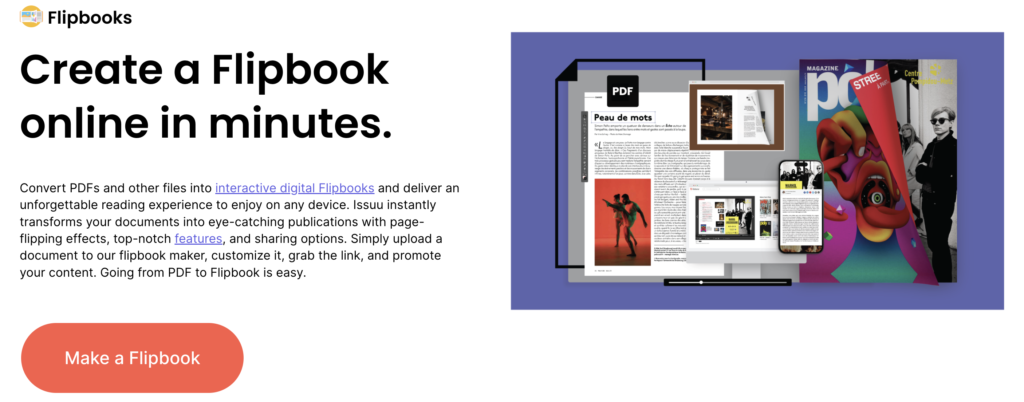
In summary, Designrr and Issuu each offer distinct publishing options tailored to different content types. Designrr is ideal for those looking to create and distribute eBooks and PDFs, especially useful for marketers and bloggers. Issuu, conversely, offers a more diverse range of publishing options, focusing on interactive digital magazines and catalogs, which is beneficial for publishers and businesses. Understanding the specific publishing needs of your content will guide you in choosing the platform that best suits your objectives.
Collaboration and Sharing Features: Designrr vs Issuu Comparison
In today’s digital age, collaboration and sharing features are pivotal for any online platform, especially in digital publishing. This segment of our Designrr vs Issuu comparison focuses on how each platform facilitates teamwork and content sharing, key aspects for creators and businesses alike.
Designrr: Simplified Sharing, Limited Collaboration Designrr emphasizes the sharing aspect of digital content, particularly for eBooks and PDFs. However, it offers limited features in terms of collaboration, focusing more on individual creators.
Key Features of Designrr’s Collaboration and Sharing:
- Direct Sharing to Social Media: Allows users to share their eBooks and PDFs directly on various social media platforms, enhancing reach and engagement.
- Integration with Email Marketing Tools: Facilitates easy distribution of eBooks and lead magnets through email marketing campaigns.
- Limited Collaborative Editing: Designrr is primarily geared towards individual use, with limited options for collaborative content creation or editing.

Issuu: Enhanced Collaborative Publishing and Broad Sharing Options Issuu stands out with its broader collaborative and sharing features, making it a go-to option for teams and organizations. It offers tools that support collaboration in creating and distributing digital publications like magazines and catalogs.
Key Features of Issuu’s Collaboration and Sharing:
- Multi-user Collaboration: Allows multiple users to work on a publication, making it suitable for teams.
- Embedding on Websites and Social Media: Publications can be easily embedded on websites and shared across social media platforms, maximizing visibility.
- Analytics Sharing: Offers the ability to share insights and analytics with team members, facilitating strategy development and decision-making.
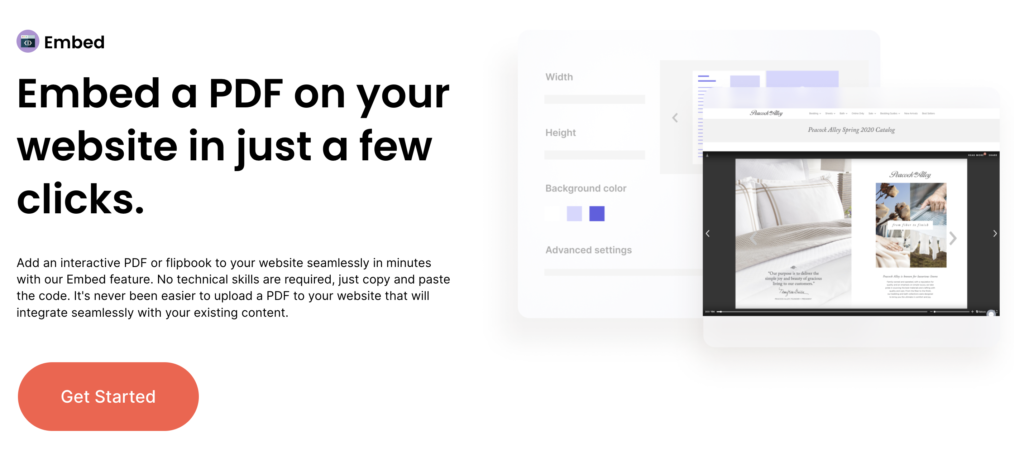
In conclusion, while both Designrr and Issuu provide efficient sharing capabilities, their approaches to collaboration differ significantly. Designrr is more suited for individual creators or small teams focusing on eBook and PDF creation, with straightforward sharing functionalities. On the other hand, Issuu caters well to larger teams and organizations with its enhanced collaborative features and broad sharing options. The choice between the two platforms should align with your specific needs for teamwork and content distribution.
SEO and Analytics Tools: Designrr vs Issuu Comparison
In the digital publishing world, SEO and analytics play a vital role in understanding audience engagement and improving content visibility. This part of our Designrr vs Issuu comparison will assess how each platform supports users in these key areas.
Designrr: Basic SEO Functionality with Focus on Content Designrr’s main strength lies in content creation, particularly eBooks and PDFs. While it offers basic SEO capabilities, its focus is not extensively on advanced SEO tools. The platform does provide some features to ensure that the content is optimized for visibility.
Key Features of Designrr’s SEO and Analytics:
- SEO Optimization for eBooks: Allows for basic SEO optimization in eBooks, which can help in search engine ranking when shared online.
- Content Analytics: Provides insights into how content is performing, although it might not be as detailed as dedicated analytics tools.
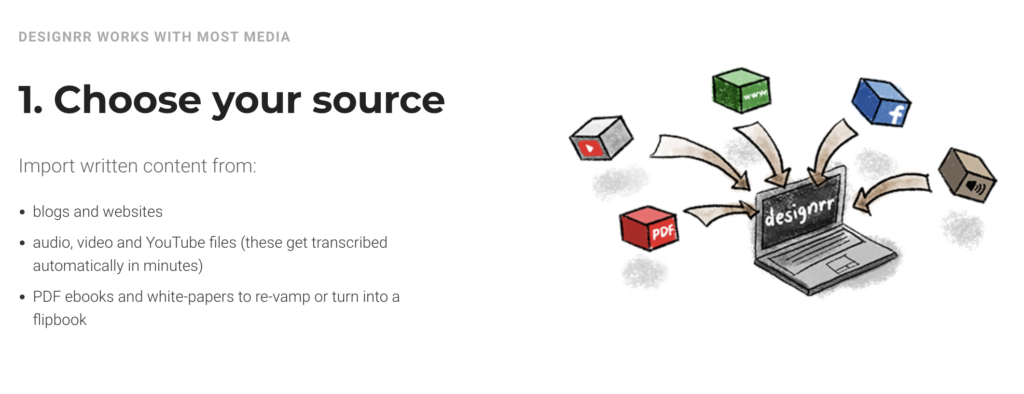
Issuu: Advanced Analytics with Some SEO Benefits Issuu offers more comprehensive analytics tools, making it a better choice for users who need detailed insights into their publication’s performance. Its SEO benefits stem primarily from the nature of the content it publishes, like digital magazines and catalogs.
Key Features of Issuu’s SEO and Analytics:
- Enhanced Analytics: Provides detailed insights into readers’ behavior, engagement levels, and demographic data.
- SEO Benefits of Digital Publications: While Issuu doesn’t offer direct SEO tools, the searchable nature of its digital publications can aid in overall online visibility.
- Content Integration on Websites: Embedding Issuu publications on websites can have indirect SEO benefits by increasing engagement and time spent on site.

In summary, Designrr offers basic SEO functionalities and analytics suitable for content creators focused on eBooks and PDFs, while Issuu provides more advanced analytics tools, beneficial for publishers and businesses who require in-depth performance data. Both platforms offer different levels of support in terms of SEO and analytics, making your choice dependent on the specific requirements of your digital publishing strategy.
Mobile Accessibility and Responsiveness: Designrr vs Issuu Comparison
In an era where mobile usage is ever-increasing, the mobile accessibility and responsiveness of digital publishing platforms are crucial. This segment of our Designrr vs Issuu comparison will evaluate how each platform fares in terms of mobile-friendliness.
Designrr: Limited Mobile Accessibility Designrr’s primary focus is on desktop-based content creation, particularly for eBooks and PDFs. While it offers a user-friendly desktop experience, its mobile accessibility is somewhat limited. Users may find the mobile interface less intuitive than the desktop version, and some features might not be as readily accessible on mobile devices.
Key Features of Designrr’s Mobile Accessibility:
- Desktop-centric Interface: Optimized for desktop use with limited mobile responsiveness.
- Basic Mobile Functionality: Provides basic functionalities on mobile, but not all desktop features are available or as user-friendly on mobile devices.
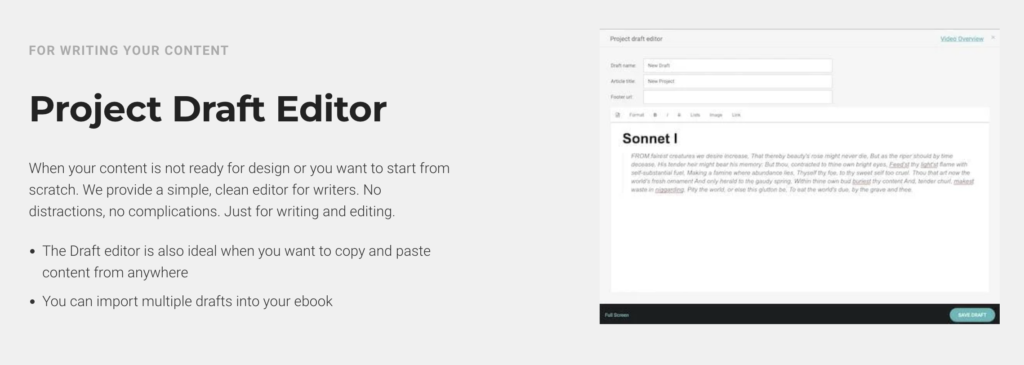
Issuu: Enhanced Mobile Responsiveness Issuu stands out with its strong mobile responsiveness, catering to both content creators and readers. Its platform ensures that digital publications like magazines and catalogs are easily accessible and readable on various mobile devices, enhancing the overall user experience.
Key Features of Issuu’s Mobile Accessibility:
- Mobile-Friendly Publications: Ensures that digital publications are optimized for mobile viewing, providing a smooth reading experience.
- Responsive Design: The layout and design of publications automatically adjust to fit the screen size of different mobile devices.
- Mobile App Availability: Offers a dedicated mobile app, allowing users to access and read publications on the go.

In conclusion, while Designrr offers basic mobile functionalities, it is primarily optimized for desktop use and might not provide the best experience for mobile users. On the other hand, Issuu excels in mobile responsiveness, with a dedicated app and publications that are optimized for mobile devices. Depending on your needs for mobile accessibility and the primary mode of content consumption by your audience, you can choose the platform that aligns best with your requirements.
E-commerce Integration: Designrr vs Issuu Comparison
E-commerce integration is a significant feature for digital publishing platforms, especially for businesses looking to directly monetize their content. In this Designrr vs Issuu comparison, we’ll explore how each platform accommodates e-commerce functionalities, an essential aspect for creators aiming to integrate their digital publications with online sales.
Designrr: Limited Direct E-commerce Integration Designrr’s strengths lie primarily in content creation and lead generation, with less emphasis on direct e-commerce integration. However, it still offers indirect ways to support e-commerce activities, particularly through the creation of marketing materials like eBooks and lead magnets that can drive sales.
Key Features of Designrr’s E-commerce Support:
- Lead Magnet Creation: Effective in creating lead magnets which can be used to attract potential customers to e-commerce sites.
- Marketing Material Development: Allows for the design of eBooks and PDFs that can be used as part of broader e-commerce marketing strategies.
- Lack of Direct E-commerce Features: Designrr does not provide direct e-commerce functionalities like shopping cart integration or product listings within its platform.
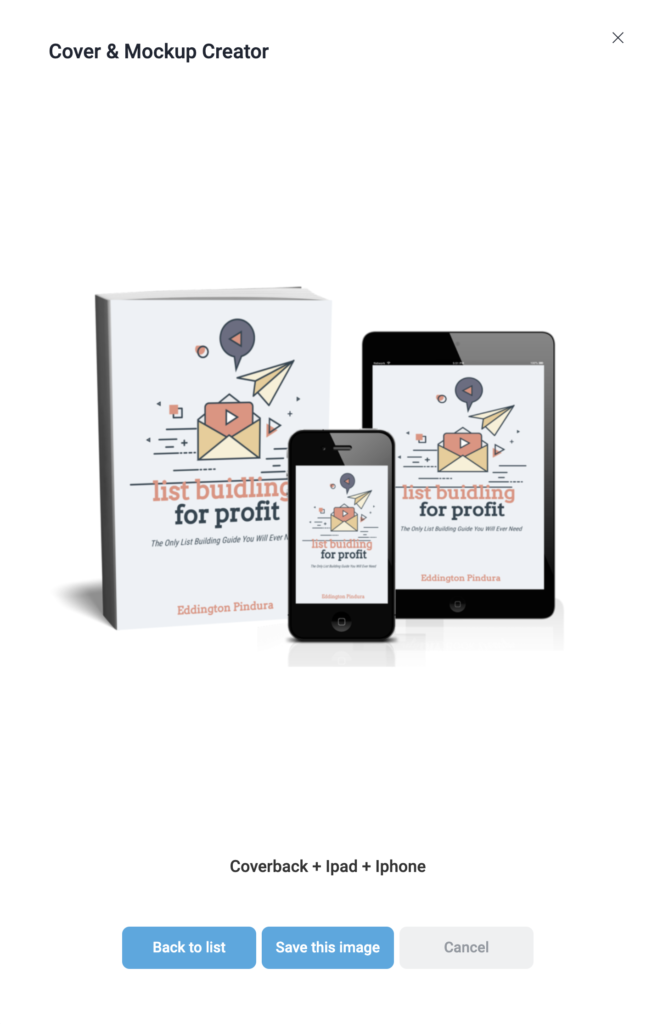
Issuu: Enhanced E-commerce Integration Capabilities Issuu stands out with its e-commerce integration features, making it a more suitable choice for businesses looking to directly link their digital publications with online sales. Its ability to embed product links and shopping functionalities within publications makes it a powerful tool for e-commerce.
Key Features of Issuu’s E-commerce Integration:
- Shoppable Content Creation: Enables the addition of shopping links directly within digital magazines and catalogs.
- Product Embedding and Links: Offers tools to embed product links, making it easy for readers to make purchases directly from the publication.
- Analytics for E-commerce: Provides insights into how readers interact with shoppable content, helping businesses refine their sales strategies.
[Add Image: Screenshots of a shoppable digital catalog on Issuu, showcasing embedded product links]
In summary, while Designrr provides indirect e-commerce support through lead generation and marketing materials, Issuu offers more direct e-commerce integration capabilities. Issuu’s ability to create shoppable content within its digital publications makes it a particularly effective tool for businesses looking to seamlessly combine content and commerce. Depending on whether your primary e-commerce strategy involves direct sales within publications or using content as a marketing tool, you can choose the platform that best aligns with your business needs.
Pricing and Plans: Designrr vs Issuu Comparison
Understanding the pricing and plans of digital publishing platforms is crucial for users to decide which service fits their budget and needs. This part of our Designrr vs Issuu comparison will provide an overview of the pricing structures and subscription options offered by both platforms.
Designrr: Flexible Pricing for Various Needs Designrr offers a range of pricing plans, catering to different user requirements from basic to more advanced needs. Its pricing structure is designed to be accessible for individual content creators and small businesses.
Key Aspects of Designrr’s Pricing:
- Tiered Pricing Plans: Multiple plans available, starting from a basic version to more advanced options with additional features.
- One-time Purchase Option: Offers a lifetime access plan, which is a cost-effective option for long-term use.
- Free Trial: Provides a free trial to test the platform before committing to a purchase.
Issuu: Subscription-Based Plans for Diverse Users Issuu’s pricing model is based on monthly or annual subscriptions, with different tiers catering to various user needs, from individuals to large enterprises. The platform’s plans are structured to support a range of publishing requirements.
Key Aspects of Issuu’s Pricing:
- Subscription Tiers: Offers several plans, including a free version with basic features and paid plans with more advanced capabilities.
- Custom Plans for Enterprises: Provides custom solutions for large businesses and publishers, tailored to their specific needs.
- Annual Subscription Discount: Discounts available for users opting for annual subscriptions over monthly payments.
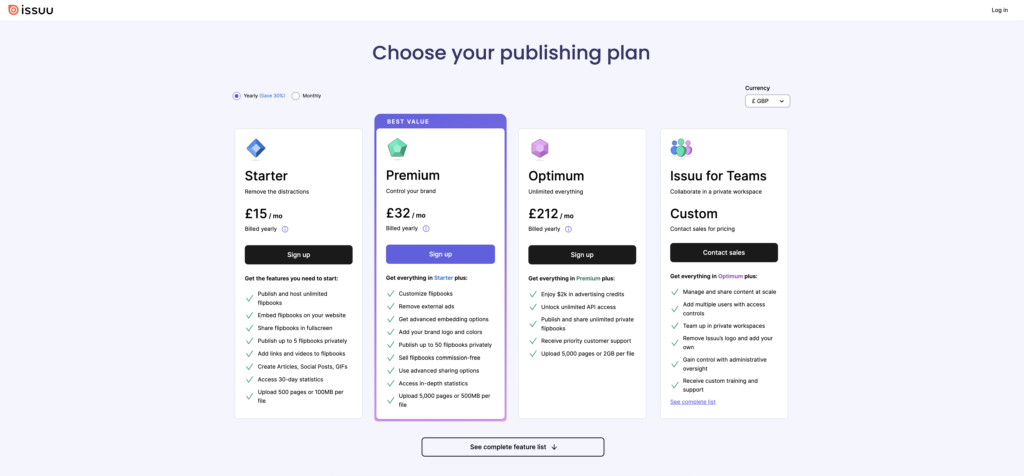
In summary, both Designrr and Issuu offer a variety of pricing options to accommodate different types of users. Designrr’s flexible pricing, including a one-time purchase option, can be appealing for users looking for a cost-effective solution without ongoing subscription fees. Issuu, with its tiered subscription model, provides scalable solutions for users ranging from individual creators to large enterprises. Your choice between Designrr and Issuu should be based on your specific publishing needs and budget considerations.
Customer Support and Resources: Designrr vs Issuu Comparison
Effective customer support and access to comprehensive resources are essential for users navigating digital publishing platforms. This section of our Designrr vs Issuu comparison will evaluate the support and resources each platform offers, ensuring users have the help they need to maximize their use of these services.
Designrr: Targeted Support and Useful Resources Designrr offers a focused approach to customer support, along with valuable resources aimed at helping users make the most out of its features for eBook creation and content repurposing.
Key Features of Designrr’s Customer Support:
- Support Channels: Offers support through email and a ticketing system, providing personalized assistance.
- Online Knowledge Base: Features a comprehensive knowledge base with tutorials, FAQs, and guides.
- Community Engagement: Hosts a community forum where users can share tips, ask questions, and learn from each other’s experiences.
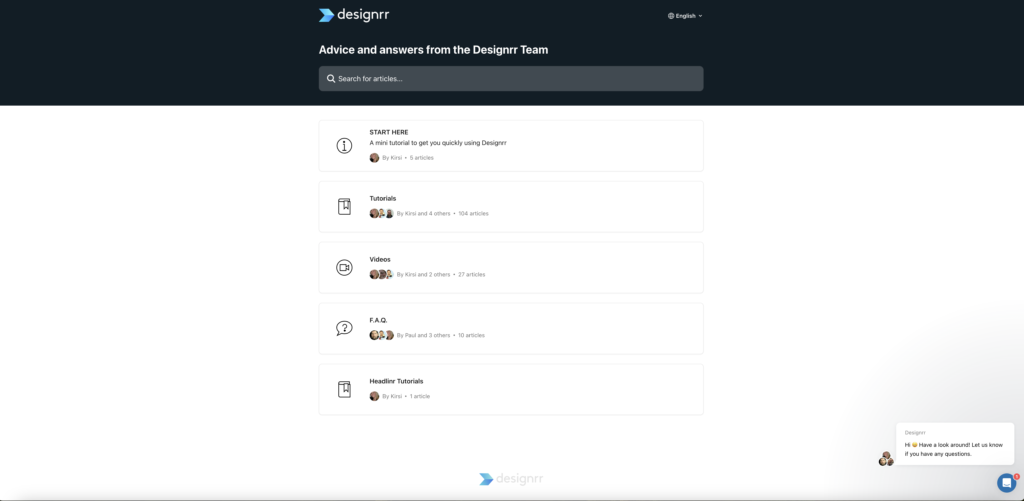
Issuu: Comprehensive Support System and Extensive Learning Materials Issuu provides robust customer support and a wide array of learning materials, catering to its diverse user base that ranges from individual creators to large publishing houses.
Key Features of Issuu’s Customer Support:
- Multiple Support Channels: Includes email support, live chat, and a help center for quick assistance.
- Educational Content: Offers an extensive library of tutorials, webinars, and articles to help users understand and effectively use its platform.
- Regular Updates and Guides: Continuously updates its resource library with new guides and best practices for digital publishing.
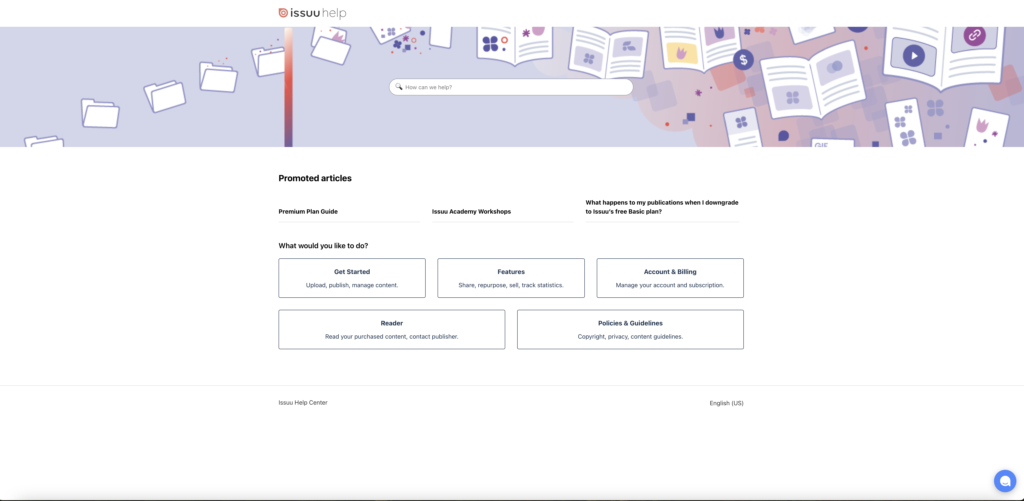
In conclusion, both Designrr and Issuu provide substantial support and resources to their users. Designrr focuses on targeted support through its knowledge base and community forums, beneficial for individual users and small businesses. In contrast, Issuu offers a more extensive support system, including live chat and a wealth of educational content, making it suitable for a broader range of users, from novices to professional publishers. Your preference between Designrr and Issuu will depend on the level of support and type of resources you need to effectively manage your digital publishing projects.
Security and Privacy Options: Designrr vs Issuu Comparison
In the realm of digital publishing, security and privacy are paramount, especially when handling sensitive content and personal data. This part of our Designrr vs Issuu comparison will focus on the security measures and privacy options each platform provides, a crucial consideration for users.
Designrr: Basic Security with Focus on Content Protection Designrr maintains a basic level of security typical of content creation platforms, with a focus on protecting the content created within its system.
Key Features of Designrr’s Security and Privacy:
- Content Protection: Includes features to safeguard eBooks and PDFs from unauthorized access or distribution.
- Data Privacy Compliance: Adheres to standard data privacy regulations to protect user information.
- Secure Payment Processing: Ensures safe and secure payment methods for its users.
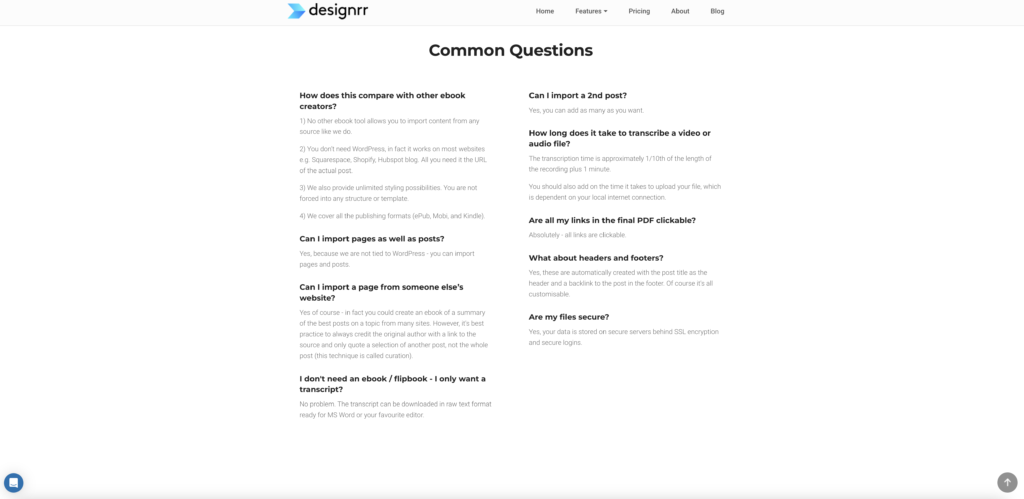
Issuu: Robust Security Features and Privacy Controls Issuu offers a more comprehensive set of security and privacy features, suitable for a platform that handles a wide range of digital publications from various creators and businesses.
Key Features of Issuu’s Security and Privacy:
- Advanced Publication Security: Provides options to restrict access to publications, such as password protection and controlled sharing.
- Compliance with Data Regulations: Ensures compliance with major data protection regulations, safeguarding user and reader information.
- Customizable Privacy Settings: Allows users to tailor the privacy settings of their publications, giving them control over who can view or share their content.
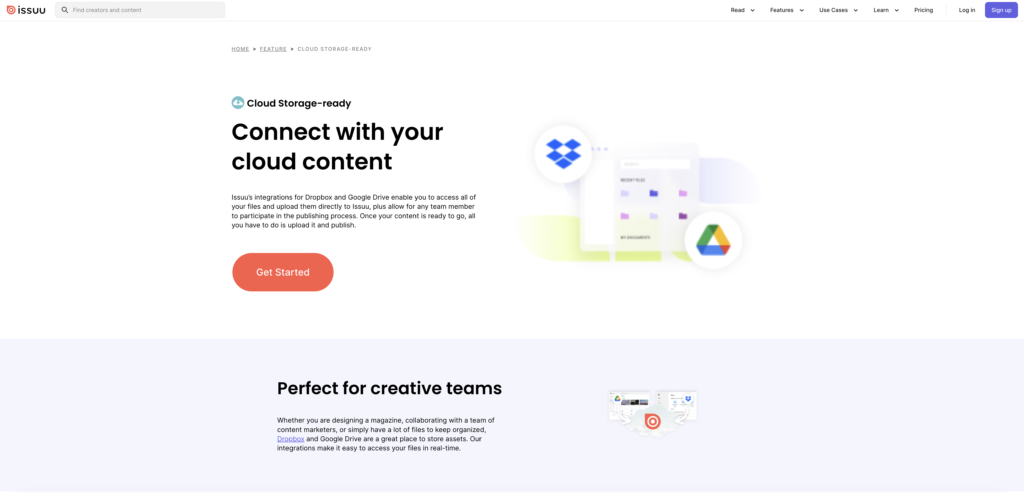
In summary, while both Designrr and Issuu take security and privacy seriously, their approaches cater to different needs. Designrr offers essential security features suitable for individual creators and small businesses focused on content like eBooks and PDFs. Issuu, with its more robust security and privacy controls, is well-suited for a diverse range of users, including large publishers who require stringent privacy and access controls. Depending on the sensitivity and scope of your digital publishing projects, you can choose the platform that aligns best with your security and privacy requirements.
Community and User Feedback: Designrr vs Issuu Comparison
Community engagement and user feedback are vital for the continuous improvement and user satisfaction of any digital service. In this section of our Designrr vs Issuu comparison, we examine how each platform engages with its user community and incorporates feedback.
Designrr: Active User Community and Responsive Feedback System Designrr fosters an active user community, primarily consisting of content creators, marketers, and entrepreneurs. The platform’s approach to user feedback is geared towards enhancing user experience and adding features based on user suggestions.
Key Aspects of Designrr’s Community and Feedback:
- Community Forum: Offers a platform where users can share ideas, ask questions, and provide feedback.
- Responsive to User Input: Known for being responsive to user feedback when updating features or fixing issues.
- User Experience Improvement: Regularly updates its offerings based on user suggestions and industry trends.
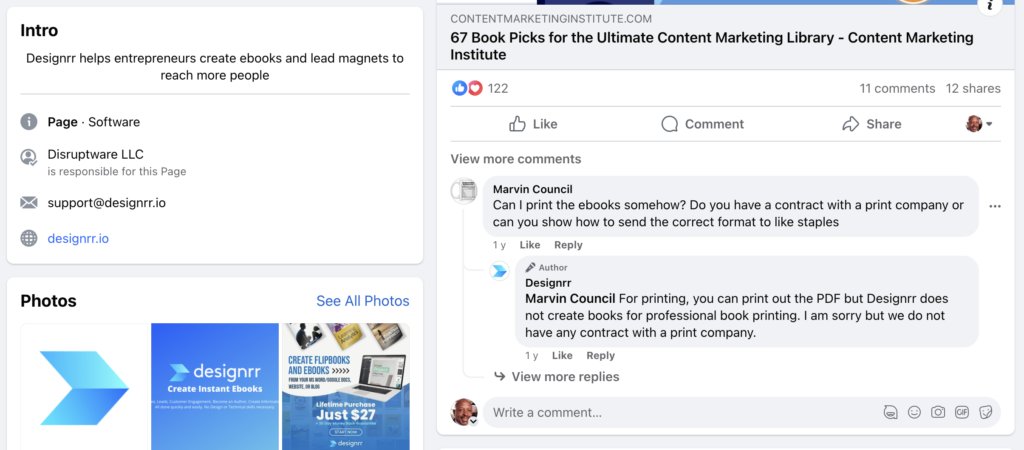
Issuu: Broad User Base and Comprehensive Feedback Mechanism Issuu’s community is diverse, including individual creators, large publishers, and businesses. The platform has established a comprehensive system to gather and act on user feedback, essential for serving its wide-ranging user base.
Key Aspects of Issuu’s Community and Feedback:
- Diverse User Community: Hosts a large and diverse community, with members from various fields of digital publishing.
- Feedback and Support Channels: Offers multiple channels for users to provide feedback, including surveys and support forums.
- Regular Platform Updates: Frequently updates its platform based on user feedback and changing digital publishing needs.

In summary, both Designrr and Issuu value community engagement and user feedback, but their approaches cater to their respective user bases. Designrr maintains an active forum and is responsive to the needs of its community of content creators and marketers. Issuu, with its broader user base, employs a more structured feedback mechanism to cater to the varied needs of individual creators and large publishers. Choosing between Designrr and Issuu may depend on the type of community interaction and feedback responsiveness you’re looking for in a digital publishing platform.
Final Verdict and Recommendations: Designrr vs Issuu Comparison
After thoroughly comparing Designrr and Issuu across various categories, it’s time to draw a conclusion and offer recommendations based on our analysis. This final verdict in our Designrr vs Issuu comparison will help you decide which platform best suits your digital publishing needs.
Designrr: Ideal for Content Marketers and eBook Creators Designrr stands out for its user-friendly interface, robust eBook creation capabilities, and content repurposing features. It’s an excellent choice for bloggers, marketers, and small businesses focused on creating eBooks, lead magnets, and repurposing content for digital marketing purposes.
Recommendation for Designrr Users:
- Ideal for: Users who need a straightforward tool for creating eBooks and repurposing content from blogs, podcasts, or videos.
- Best Suited for: Content marketers, bloggers, and small to medium-sized businesses.
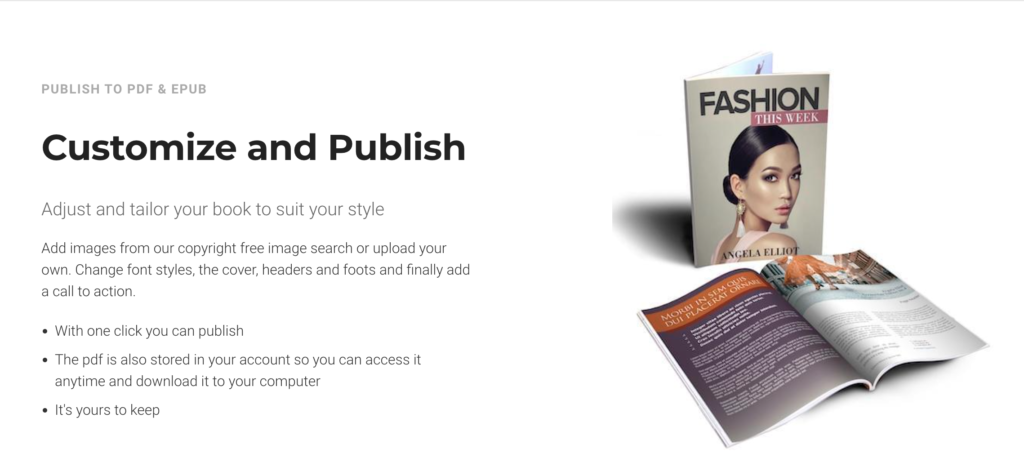
Issuu: Perfect for Digital Magazines and Interactive Publications Issuu excels in publishing interactive digital magazines, catalogs, and brochures. With its wide range of publishing options, robust analytics, and strong mobile responsiveness, it’s the go-to platform for medium to large publishers and businesses focusing on producing professional, high-quality digital publications.
Recommendation for Issuu Users:
- Ideal for: Creators and publishers seeking a platform for distributing professional digital magazines, catalogs, and brochures.
- Best Suited for: Medium to large publishing houses, businesses, and organizations that require detailed analytics and advanced publishing features.

Final Thoughts: In conclusion, both Designrr and Issuu offer unique strengths. Your choice between the two should be guided by your specific digital publishing needs. If your primary goal is eBook creation and content repurposing for digital marketing, Designrr is the more appropriate choice. However, if you aim to publish professional digital magazines and require advanced features like analytics and interactivity, Issuu will better meet your needs.
Conclusion: Navigating the Choice Between Designrr and Issuu
Choosing the right digital publishing platform can significantly impact the success of your online content strategy. In our comprehensive comparison of Designrr and Issuu, we’ve explored various aspects from ease of use and template design to pricing and customer support. Both platforms have their unique strengths and cater to different needs in the digital publishing realm.
Designrr emerges as a strong contender for content creators, marketers, and small businesses. Its user-friendly interface, robust eBook and lead magnet creation capabilities, and effective content repurposing features make it an excellent choice for those looking to enhance their digital marketing efforts with engaging content.
On the other hand, Issuu stands out for medium to large publishers and businesses. Its ability to create professional, interactive digital magazines, catalogs, and brochures, coupled with detailed analytics and excellent mobile responsiveness, makes it a go-to solution for those producing high-quality digital publications on a larger scale.
Your final decision between Designrr and Issuu should hinge on your specific requirements:
- Opt for Designrr if your focus is on marketing-oriented content creation, especially if you require a simple yet effective tool for eBooks and PDFs.
- Choose Issuu if you’re leaning towards publishing interactive, professional-looking digital magazines and catalogs and need a platform with a broader range of publishing options and advanced features.
In the ever-evolving world of digital publishing, both Designrr and Issuu offer capabilities that can elevate your content. Consider your audience, the type of content you produce, and your long-term digital strategy when making your choice. Whichever platform you choose, embracing the right digital publishing tool can open up new avenues for creativity, audience engagement, and business growth.

